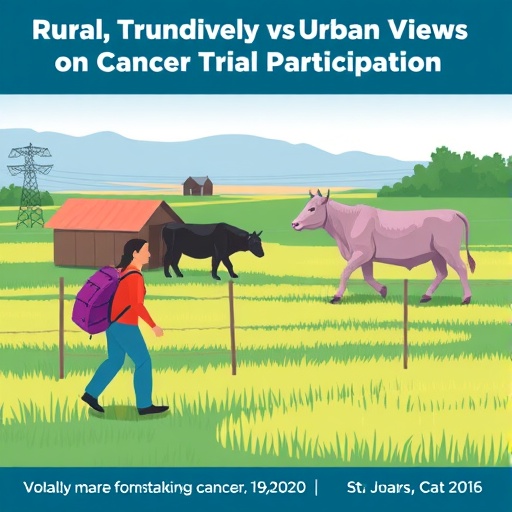In a groundbreaking study published in Nature Communications, researchers have unveiled compelling neural, genetic, and environmental evidence pointing to a unified disease factor underlying the co-occurrence of mental and physical health disorders. This work, led by Chen, Zhang, Liu, and colleagues, pushes the boundaries of our understanding of multimorbidity—a phenomenon where individuals simultaneously suffer from multiple chronic conditions—by illustrating how intricately mental and physical ailments are intertwined at molecular and systemic levels.
For decades, scientists and clinicians have observed the frequent overlap between mental health disorders such as depression and anxiety, and chronic physical conditions including cardiovascular diseases and diabetes. However, dissecting the mechanisms responsible for this multimorbidity has remained elusive. The conventional approach often considered mental and physical illnesses as distinct entities with separate etiologies. This pioneering research challenges that notion by providing a convergent model, suggesting a shared underlying disease factor mediating these seemingly disparate conditions.
To construct this multifaceted model, the team employed integrative analyses combining neuroimaging, genome-wide association studies, and environmental exposure metrics across large population cohorts. The neural component focused on analyzing brain structure and function, revealing that specific patterns of neural network dysfunction were consistently present across individuals exhibiting symptoms of both mental and physical illness. Notably, disruptions in brain regions implicated in emotional regulation and autonomic control emerged as key correlates of multimorbid states.
On the genetic front, the researchers identified a constellation of genetic variants exerting pleiotropic effects—meaning single genetic factors influencing multiple traits—that contribute to elevated risks across a spectrum of mental and somatic disorders. By leveraging advanced statistical genetics techniques such as polygenic risk scoring and Mendelian randomization, the study delineated how these shared genetic factors interplay to confer vulnerability to multimorbidity rather than isolated disease phenotypes.
Beyond intrinsic biological determinants, environmental factors surfaced as critical modulators amplifying or mitigating the impact of genetic and neural predispositions. Exposure to chronic stressors, socio-economic deprivation, and adverse early-life experiences were shown to synergize with genetic susceptibilities, shaping the trajectory and severity of illness combinations. This nuanced gene-environment interaction underscores the necessity of considering external conditions when modeling complex health outcomes.
The integration of neural, genetic, and environmental data culminated in the proposal of a latent disease factor—an underlying dimension encompassing shared pathogenic pathways leading to both mental and physical health dysfunctions. This factor effectively transcends traditional diagnostic categories, advocating for a holistic approach to patient assessment and treatment that acknowledges the interconnectedness of bodily and psychological processes.
This multidimensional framework holds profound implications for future research and clinical practice. It invites the medical field to rethink diagnostic classifications and embrace precision medicine strategies that target common etiological roots, rather than treating mental and physical disorders in isolation. Furthermore, it hints at novel therapeutic targets situated at the crossroads of brain function, genetic regulation, and environmental responsiveness, potentially revolutionizing intervention efficacy.
Additionally, this study sheds light on the prevalence and distribution of multimorbidity across populations, highlighting that certain demographic groups exhibit heightened vulnerability due to compounded genetic risks and environmental adversities. These insights can inform public health policies aimed at reducing health disparities by tailoring prevention and intervention programs to specific high-risk communities.
From a technical standpoint, the research harnessed cutting-edge neuroimaging modalities including resting-state functional MRI to capture dynamic brain connectivity alterations associated with multimorbidity. Genetic analyses utilized massive genome-wide datasets, combined with machine learning algorithms, to unravel the complex polygenic architecture shared by mental and physical health conditions. The environmental data incorporated longitudinal assessments, enriching the temporal and contextual understanding of disease evolution.
Importantly, the study addresses causality—often a formidable challenge in multifactorial disease research—by employing sophisticated causal inference methodologies. These approaches lend robustness to the assertion that the latent disease factor emerges from interactive, bidirectional influences rather than mere coincidence or reverse causation, reinforcing the biological plausibility of the integrated model.
The findings also open new avenues for biomarker discovery. Identifying neural signatures and genetic markers that reliably signal the presence or risk of multimorbidity could catalyze the development of diagnostic assays, enabling early detection and personalized intervention plans. Such advancements would represent a paradigm shift toward proactive healthcare, minimizing disease burden and improving quality of life.
Moreover, by elucidating the shared pathogenic pathways, this research supports the exploration of pharmacological agents capable of simultaneously addressing multiple disease domains. Repurposing existing drugs or designing novel compounds targeting the neural circuits or molecular pathways implicated may enhance treatment outcomes while reducing polypharmacy risks.
Equally compelling is the emphasis on environmental modifiers, advocating for integrated healthcare models that incorporate psychosocial support, lifestyle modifications, and community-based interventions alongside biomedical treatments. This comprehensive strategy recognizes that alleviating environmental stressors can profoundly alter disease trajectories by modulating underlying neurobiological mechanisms.
This transformative work exemplifies the power of interdisciplinary collaboration, combining neuroscience, genetics, epidemiology, and data science to unravel complex health phenomena. It paves the way for future studies to refine and expand the model, explore additional dimensions such as epigenetics and microbiome influences, and translate findings into practical applications.
In conclusion, the study by Chen et al. marks a milestone in understanding the profound links between mental and physical health. By revealing a shared disease factor orchestrated through neural, genetic, and environmental determinants, it challenges reductionist thinking and calls for integrative approaches in research and care. The hope is that this knowledge will catalyze innovation in diagnostics, therapeutics, and public health, ultimately mitigating the heavy toll of multimorbidity that afflicts millions worldwide.
Subject of Research: Multimorbidity in mental and physical health through neural, genetic, and environmental integration.
Article Title: Neural–genetic–environmental evidence for a disease factor in mental and physical health multimorbidity.
Article References:
Chen, J., Zhang, Y., Liu, S. et al. Neural–genetic–environmental evidence for a disease factor in mental and physical health multimorbidity. Nat Commun 16, 10088 (2025). https://doi.org/10.1038/s41467-025-65055-w
Image Credits: AI Generated
DOI: https://doi.org/10.1038/s41467-025-65055-w
Tags: cardiovascular diseases and mental healthchronic conditions co-occurrencedepression and anxiety overlapenvironmental factors in multimorbiditygenome-wide association studies in diseaseinnovative research in mental physical health integrationintegrative analysis of health disordersmental and physical health connectionsneural genetic links to multimorbidityneuroimaging in mental health researchshared disease mechanisms in healthcaresystemic factors in chronic illness





